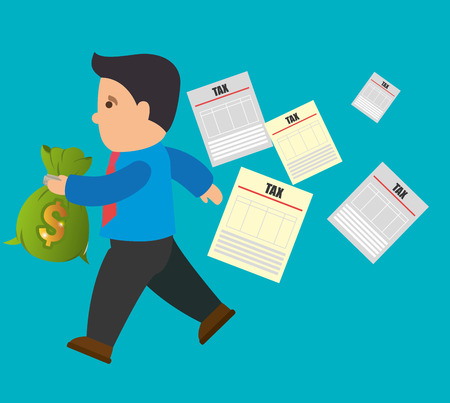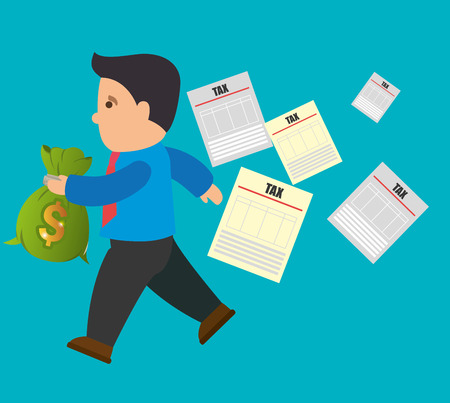Is crowdfunding safe?
 In recent years, it has become more and more common for startups and small businesses to be crowdfunded – that is, they are funded by a large number of ‘backers’ who donate small amounts of money on websites like Crowdcube and Kickstarter. Crowdfunding usually offers backers one of two things: rewards or equity. The rewards model offers products or other rewards to their investors depending on the amount invested, while the equity model gives out shares of the company. Some investors are simply fans of the company or the product, while others are hoping to make a good profit.
In recent years, it has become more and more common for startups and small businesses to be crowdfunded – that is, they are funded by a large number of ‘backers’ who donate small amounts of money on websites like Crowdcube and Kickstarter. Crowdfunding usually offers backers one of two things: rewards or equity. The rewards model offers products or other rewards to their investors depending on the amount invested, while the equity model gives out shares of the company. Some investors are simply fans of the company or the product, while others are hoping to make a good profit.
Crowdfunding: the good and the bad
There are numerous benefits to crowdfunding. The most obvious one is that it’s very easy to set up a crowdfunding page on a large platform that attracts good attention from a worldwide audience. Crowdfunding also helps a business or product owner to gauge their product’s popularity at its infancy stage and identify their potential customers, many of whom remain fiercely loyal to the brand or business for a considerably long time since they’re involved with the growing business from the beginning.
So, what are the downsides to crowdfunding? Like any investment, it is never a guarantee for success – and failing to deliver can cause public backlash. Also, two-thirds of crowdfunding campaigns do not reach their goals, meaning the start-up dream ends before a product is realised. Struggle may also happen to well-funded projects. The British firm FFF Ltd raised £5 million on Crowdcube for Sugru, a type of reusable glue, but failed to mention the risks associated with bank loans they had also taken out. The product was not as successful as anticipated, and in May 2018, FFF disappointed investors when they sold Sugru for only £7.6 million to the German company Tesa – that’s £25.4 million less than what they had said it was worth on Crowdcube. As a result, investors face losing 90% of their investment – and just like the crowdfunding was very public, so is the failure.
Should your business rely on crowdfunding?
While crowdfunding seems like an easy way to raise money, it can also be unreliable in regard to how much you can raise, as you can’t predict how many investors will back you. The temptation to offer generous perks for larger investments should also be considered carefully, and if it takes a while to turn your concept into a realistic product, your backers may become impatient.
That being said, crowdfunding definitively has its benefits. Most crowdfunding sites only charge a fee if your project is successful, and the fee is usually fairly low, at around 5%. Large crowdfunding sites have millions of potential backers waiting to make their next investment. In other words, you are taking a fairly small financial risk but also reaching a big audience. The most important thing is to do your research first, check the terms and conditions of each crowdfunding platform available to you, and carefully consider what you can give your backers in return for their money.
Get funding advice from TaxAgility
As with all investors, the people who back your business on a crowdfunding platform are more likely to part with their money if they feel like it’s a sound investment. You should carefully consider what you can offer, and make sure that you have a plan in place for every scenario. With the help of specialist small business accountants TaxAgility, you can work out a solid business plan with a clear strategy.
As experienced London accountants for startups, we can help get your business off the ground, and you can avoid the common mistakes that many enthusiastic business owners make.
Before you take the leap and launch your idea on a crowdfunding platform, call your local London accountants on 020 8108 0090, use our Online Enquiry Form, or pop into one of our offices:
- Putney
- Wimbledon
- Hammersmith
- Fulham
- Richmond
- Central London (Cavendish Square)
Small Business: Tax Incentives
 If you were to ask a group of small business owners what tax incentives they can enjoy, you are likely to get different answers, as there are quite a few incentives out there and they can be quite confusing. Some may be relevant to you, others may not. To know more about what the UK government offers at present and what schemes are useful to you, it is best to speak with a professional accounting firm for Small Businesses in London like us. At TaxAgility, we can help to advise on tax incentives.
If you were to ask a group of small business owners what tax incentives they can enjoy, you are likely to get different answers, as there are quite a few incentives out there and they can be quite confusing. Some may be relevant to you, others may not. To know more about what the UK government offers at present and what schemes are useful to you, it is best to speak with a professional accounting firm for Small Businesses in London like us. At TaxAgility, we can help to advise on tax incentives.
Popular tax incentives that are relevant to small businesses
- Annual Investment Allowance (AIA) – this is for businesses investing in qualifying investment for up to £200,000.
Example: You’re a sole trader not registered for VAT. You just bought a used van for £2,000 to transport goods. Your profit for the year is £20,000 and this means you can claim AIA on the cost of the van, so your tax will be on £18,000 (which is £20,000 - £2,000).
If you’re VAT registered, you can claim AIA on the cost of the asset less any VAT you can reclaim on the asset.
- Employment Allowance – introduced in 2014, this allows you to get up to £3,000 a year from the Class 1 National Insurance you have paid.
If you’re using XERO and already claimed the £3,000 Employment Allowance in the previous tax year, then XERO will automatically apply the annual balance of £3,000 in the current tax year.
- Research & Development Tax Relief – designed to encourage SMEs to invest in R&D by reducing your taxable profit and thereby decreasing your corporate tax.
As a small business owner, you can deduct an extra 130% of your qualifying costs from your yearly profit – in addition to the normal 100% deduction – this makes a total of 230% deduction. Talk to us if you’d like to understand more about Research & Development Tax Reliefs, from what counts as R&D to the different types of relief.
- Energy Technology List (ETL) – is a list of energy-efficient items which SEMs can purchase and benefit from single-year capital allowances.
Apart from these, there is also a range of Business Rates Reliefs – from Small Business Rate Relief to Relief for Pubs (in England with a rateable value of less than £100,000). Talk to us to find out more.
How important are Tax Incentives for a small business?
Tax Incentives are important for small businesses because they are an effective way to reduce your corporate tax bill, in addition to other ways like paying yourself tax efficiently.
To understand more and see how you and your small business can be tax efficient with tax reliefs, contact us today on 020 8108 0090 to arrange a complimentary, no obligation meeting.
To learn how the tax incentives for your small business, call your local London accountants TaxAgility on 020 8108 0090, or pop into one of our offices:
- Putney
- Wimbledon
- Hammersmith
- Fulham
- Richmond
- Central London (Cavendish Square)
What is a good debt ratio?
 Debt ratio, also known as the debt-to-asset ratio, is one of the KPIs used to assess a company’s leverage, and indicate what percentage of the business is financed through debt. There are no hard and fast rules about what debt ratio is ‘good’, as it varies by the type of business you are looking at, but it’s a good measure of the financial stability of a business. A business with a poor debt ratio might struggle to attain finance as lenders could consider them a risk. It can also indicate that the business has problems with cash flow.
Debt ratio, also known as the debt-to-asset ratio, is one of the KPIs used to assess a company’s leverage, and indicate what percentage of the business is financed through debt. There are no hard and fast rules about what debt ratio is ‘good’, as it varies by the type of business you are looking at, but it’s a good measure of the financial stability of a business. A business with a poor debt ratio might struggle to attain finance as lenders could consider them a risk. It can also indicate that the business has problems with cash flow.
How is debt-to-asset ratio calculated?
Debt-to-asset ratio is calculated by dividing the total liabilities (debt) of a company by their total assets. For example, a business with liabilities of £3,000 and assets of £10,000 would have a debt ratio of 30%. If their liabilities were £4,000, it would be 40%. The higher the number you end up with, the higher the ratio – and therefore a higher degree of debt financing. Another ratio used to analyse a company’s leverage position is the debt-to-equity ratio, which compares total liabilities to shareholders’ equity. Again, a higher number means the business is using more leverage, which means they could have a higher risk of financial problems.
What is the ideal debt ratio?
Generally speaking, a ratio of 40% or less is better. Some companies are exceptions to this rule, such as utility companies or banks, but for small businesses and individuals, a low debt ratio is preferable. Do keep in mind that there are times you can use debt to your advantage and that you will often need to take on debt to make your business grow. After all, without investment, you are unlikely to make returns.
How can I improve my debt ratio?
There isn’t necessarily a quick or easy way to improve your debt ratio, but it’s a great goal to have. If you need to lower your debt ratio, consider the following:
- Don’t take out more loans – or consult someone before you do!
- Refinance or pay off debts. If you have many loans that are accruing interest, consider refinancing them if it will lower the interest. You could also consider trying to pay off your debts sooner.
- Get a small business accountant. If you are uncertain of how to improve your debt ratio, sit down with a local accountant who will see the potential in your business.
TaxAgility can help
Debt ratio is one of the many key performance indicators (KPIs) you can use to measure how your small business is progressing. Although a good debt ratio is important, it’s not the only KPI you should use. There are times when you can use debt to grow your business. Getting help from London Accountants TaxAgility to tackle your financial management will help you understand where you’re heading, and what KPIs are relevant to your specific business model. As London accountants looking after small businesses and startups, we know how important it is to have someone just down the road who can see you face-to-face.
To learn how you can hack your business finances, call your local London accountants TaxAgility on 020 8108 0090, or pop into one of our offices:
- Putney
- Wimbledon
- Hammersmith
- Fulham
- Richmond
- Central London (Cavendish Square)
Using Gross Profit Margin to help your business
 There are many elements to running a business, but the main one is to ensure that you are making more money than you spend. For businesses that have large, multiple outgoings, such as builders and mechanics, it can be an effort to keep track of the money spent to keep business going. However, you need to make sure your work is priced in relation to how much it costs you to run your business. By calculating your Gross Profit Margin , you can see how you need to price your jobs. Without knowing your Gross Margin, it is safe to say that your company will fall short.
There are many elements to running a business, but the main one is to ensure that you are making more money than you spend. For businesses that have large, multiple outgoings, such as builders and mechanics, it can be an effort to keep track of the money spent to keep business going. However, you need to make sure your work is priced in relation to how much it costs you to run your business. By calculating your Gross Profit Margin , you can see how you need to price your jobs. Without knowing your Gross Margin, it is safe to say that your company will fall short.
What is Gross Profit Margin?
Gross Profit Margin is measured by the Revenue minus COGS (Costs Of Goods Sold), then divided by the Revenue itself. This is calculated to see how well the company is performing financially after the revenue and the Cost Of Goods Sold is deducted. Most companies would want to calculate this to see how much they have left after their sales. What you need to keep in mind is that the gross profit margin does not equal the margin for the whole business; it only equals the percentage of the sales revenue, and therefore indicates how well the company is using its resources. Generally speaking, the higher the percentage, the better the company is performing.
The metric would look like this:
Gross Profit Margin (calculated in %) = (Revenue – COGS) ÷ Revenue
What is Gross Profit and Net profit?
Gross Profit is the profit that is made after excluding the costs of the goods that has been sold. To not cause any confusion, Gross Profit should be calculated before calculating the Gross Profit Margin so that you will be able to know the Gross Profit (also known as Gross income) before calculating its margin. The formula for this would be:
Gross Profit = Revenue – Cost of Goods Sold.
Net Profit is the amount a company would have left after the taxes and operating expenses such as rent, payroll, or insurance have been deducted from the company’s revenue. On your income statement, the amount that your company has made after the Cost of Goods, operating expenses and taxes have been deducted is the Net Profit.
From receiving regular income statements, you should be able to calculate your average revenue, gross profit, and net profit as well as your operating expenses.
How is Gross Profit Margin useful?
Small companies and startups should be looking at a gross margin of at least 30% when pricing jobs. This means that if your company made £30,000 in sales revenue and the cost of goods sold were £5,000, the Gross Profit Margin would be 83% and the mark-up would be 500%. By keeping an eye on your gross profit margin, you can ensure you are charging the correct amount for your jobs, and not losing money.
How TaxAgility can help
The team at TaxAgility can help small business owners and aspiring business owners with their finances and show them how they can stay on top of their spending, making budgets, and making sure that their profits are steady. We are always eager to help out new and future businesses grow successfully.
For more financial advice on growing your business, contact TaxAgility on 020 8108 0090.


